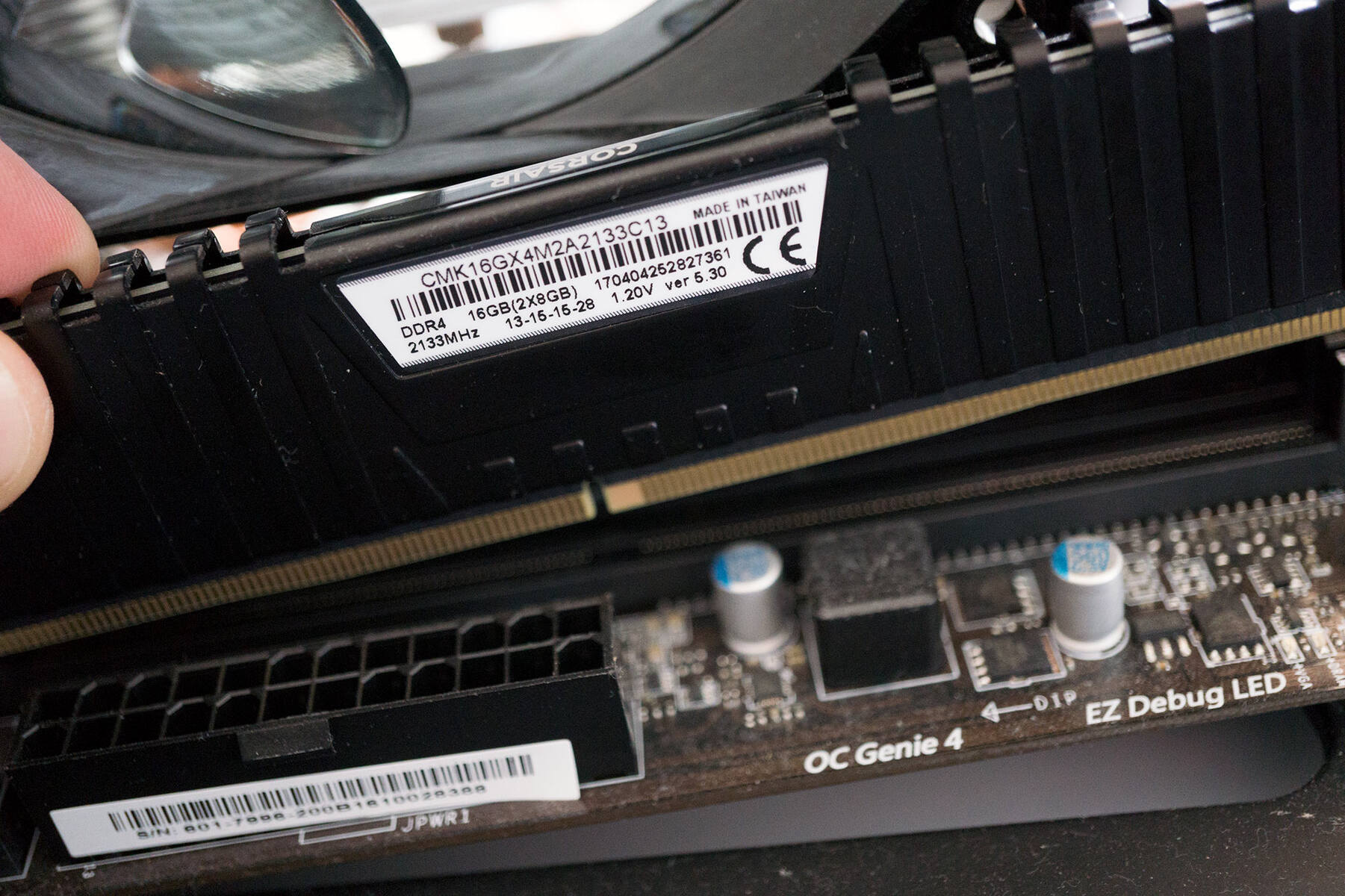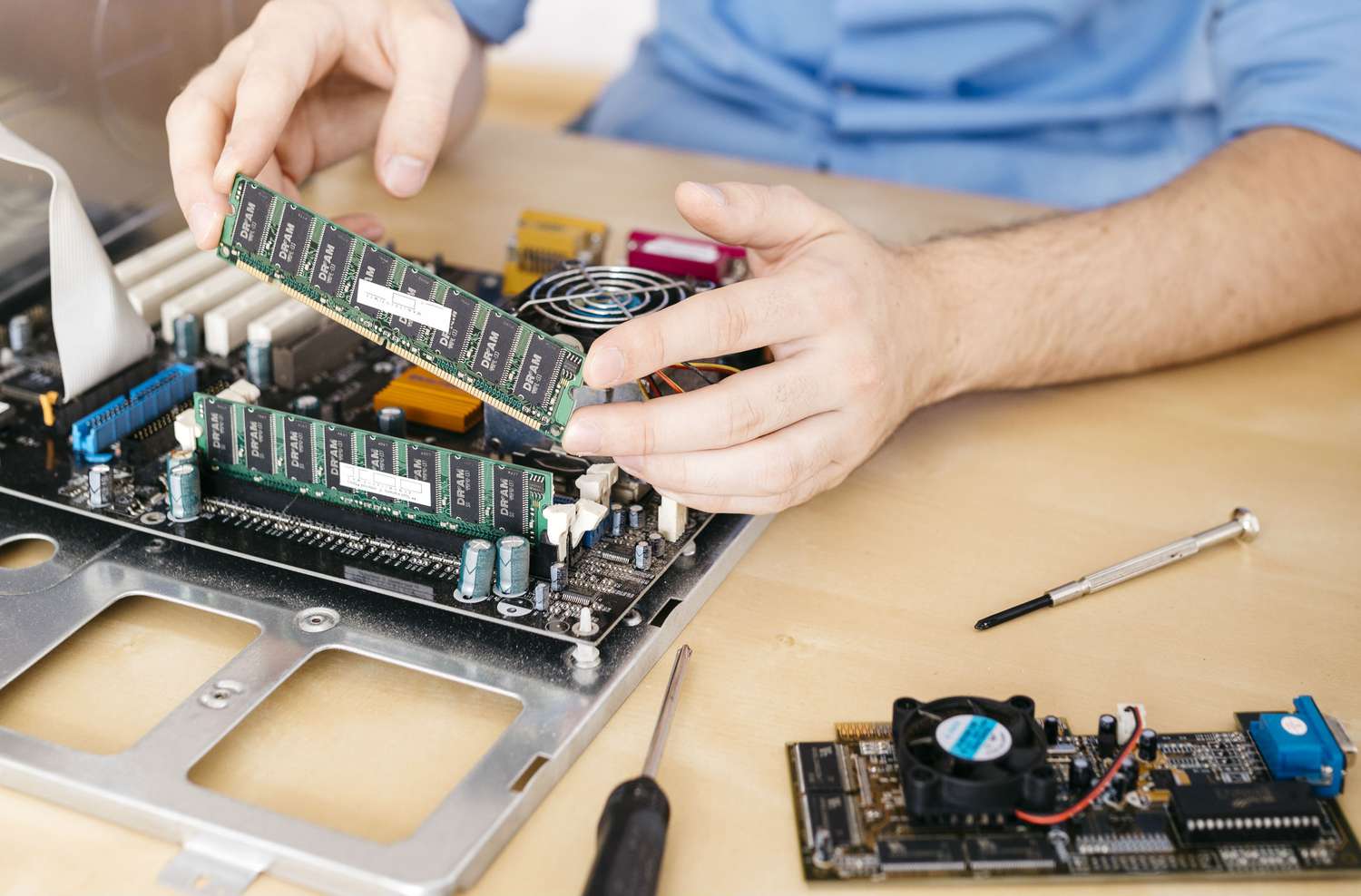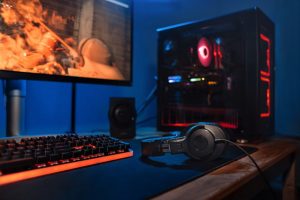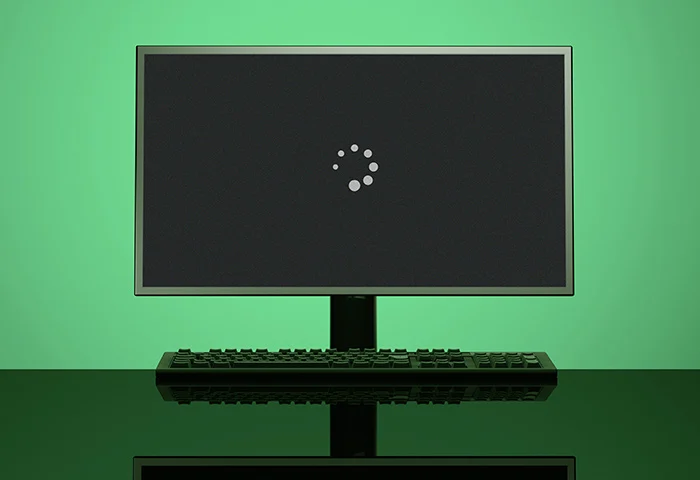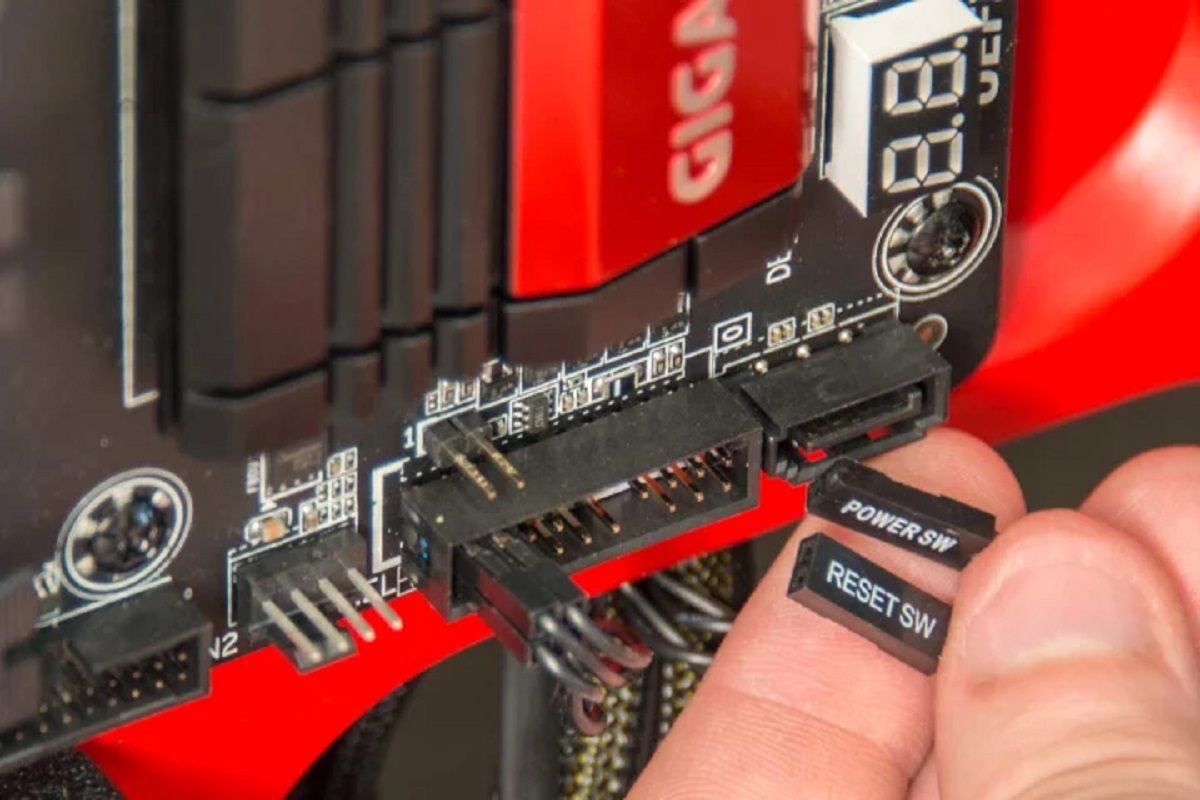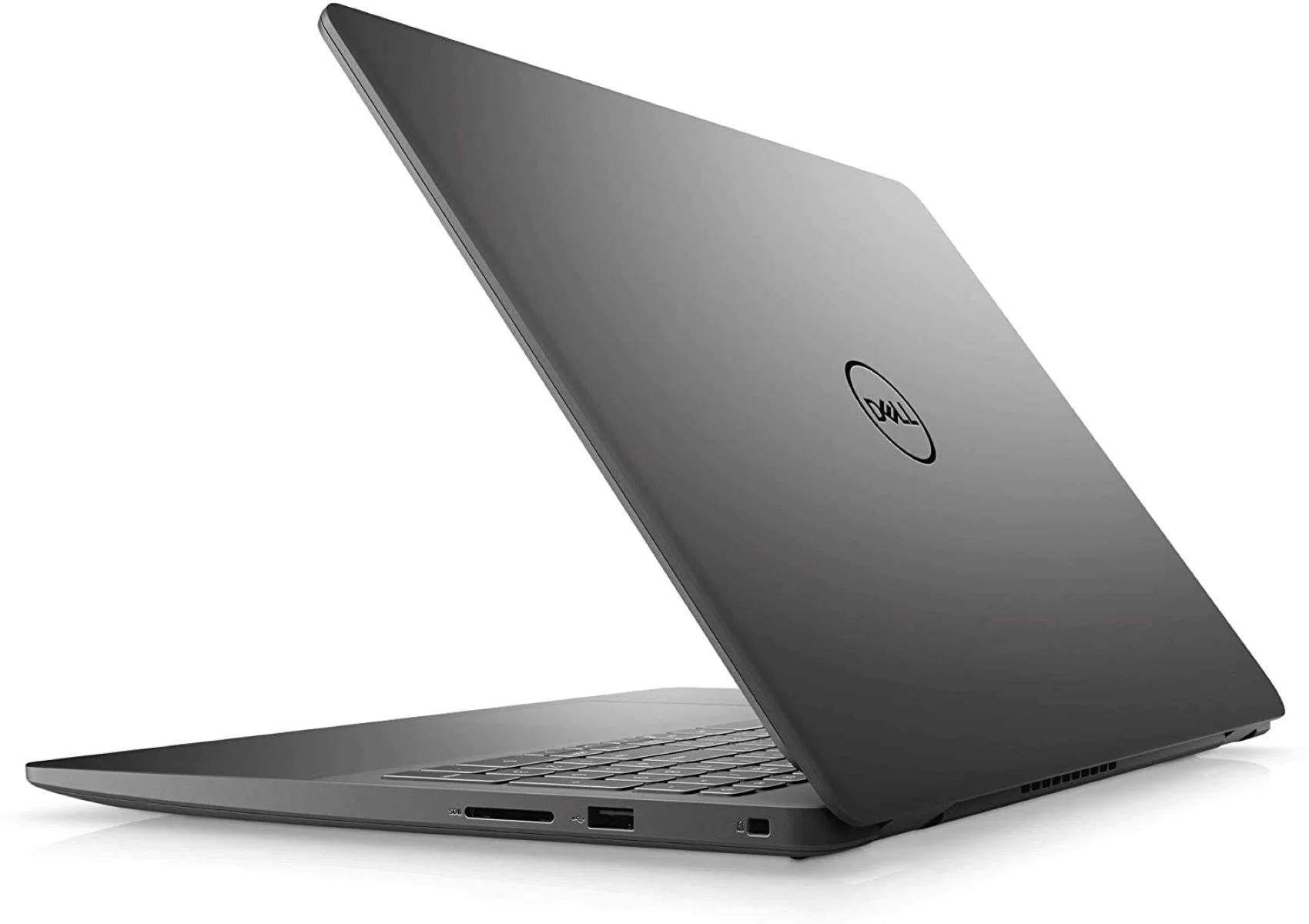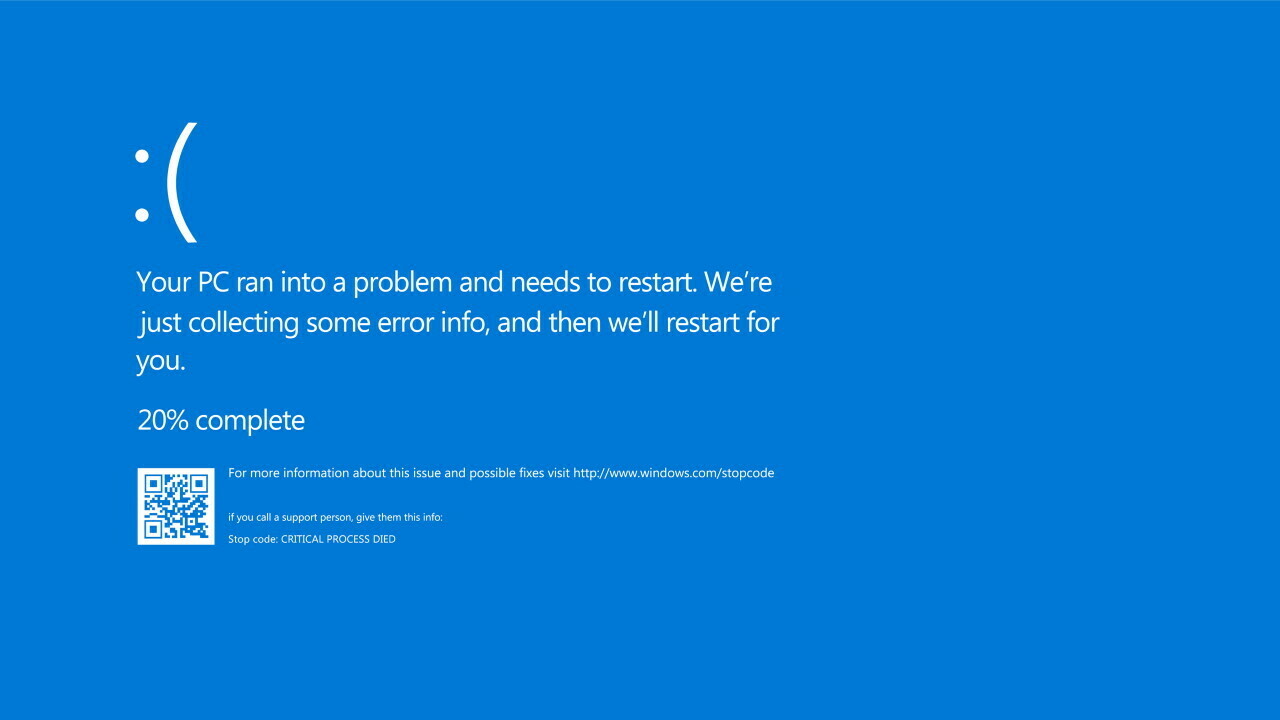Introduction
Welcome to the world of computing, where we rely on the intricate workings of hardware to power our devices and bring them to life. Among the various components that make up a computer, RAM (Random Access Memory) holds a significant role. You may have heard about the importance of RAM in your PC, but have you ever wondered what would happen if you were to boot your computer without it?
RAM is a fundamental component of any computer system, serving as temporary storage for data that the CPU (Central Processing Unit) accesses frequently. Without it, the computer’s overall performance could be severely impacted.
In this article, we will dive into the world of RAM and explore the consequences of attempting to boot a PC without this vital component. We will also examine whether a computer can even boot without RAM and discuss the potential errors and damage that can occur in such a scenario. So, let’s get started and uncover what really happens when you try to boot a PC without RAM!
What is RAM?
Before we delve into what happens when you boot a PC without RAM, let’s first understand what RAM actually is. RAM, or Random Access Memory, is a type of computer memory that allows for the temporary storage and retrieval of data. Unlike the long-term storage provided by hard drives or solid-state drives, RAM is volatile memory, meaning its contents are lost when the computer is powered off or restarted.
RAM plays a crucial role in the operation of a computer system. It acts as a bridge between the CPU and the storage devices, providing a fast and temporary workspace for data that the CPU needs to access quickly. When a program is running, the necessary data is loaded into RAM, allowing the CPU to access it rapidly, significantly improving the overall performance of the computer.
RAM is measured in terms of storage capacity, typically in gigabytes (GB). The more RAM a computer has, the more data it can store and access quickly. This has a direct impact on multitasking capabilities, as a computer with higher RAM can handle multiple tasks simultaneously without experiencing significant slowdowns.
There are different types of RAM available in the market, including DDR3, DDR4, and the latest DDR5. These types refer to the generation and technology used in the RAM modules, with each generation bringing improved performance and higher data transfer rates.
In summary, RAM is a critical component of a computer system, providing temporary storage for data that the CPU needs to access quickly. Without RAM, the performance and functionality of a computer would be severely compromised. Now that we have a good understanding of RAM, let’s explore what happens when you attempt to boot a PC without this vital component.
The Role of RAM in a PC
RAM, or Random Access Memory, plays a crucial role in the overall performance and functionality of a PC. It acts as a temporary storage unit that the CPU (Central Processing Unit) uses to store and retrieve data quickly. Without RAM, a computer’s ability to process information efficiently would be severely hindered.
One of the primary roles of RAM is to provide quick access to data that the CPU needs to perform tasks. When you open a program or load a file, the relevant data is loaded into RAM so that the CPU can access it swiftly. This allows for faster program execution, smoother multitasking, and seamless user experience.
RAM also plays a critical role in virtual memory management. When the physical memory (RAM) is insufficient to accommodate all the data required by running applications, the computer utilizes a portion of the hard drive as virtual memory. However, accessing data from the hard drive is significantly slower than accessing it from RAM. Therefore, having an adequate amount of RAM is essential to avoid excessive reliance on virtual memory, which can slow down the system’s performance.
Furthermore, RAM acts as a cache for frequently used data. By storing frequently accessed files and instructions in RAM, the CPU can quickly retrieve them without having to access the slower storage devices, such as hard drives or solid-state drives. This caching mechanism significantly reduces latency and enhances the overall speed of the system.
The amount of RAM in a PC also determines its ability to handle resource-intensive tasks. For example, if you engage in video editing, gaming, or running virtual machines, having an ample amount of RAM is essential to ensure smooth and efficient operation. Insufficient RAM can lead to system slowdowns, lag, and even crashes when the computer runs out of available memory.
In addition to its primary role in data storage and retrieval, RAM also facilitates communication between different components of a computer system. It allows the CPU, graphics card, and other hardware components to exchange data quickly, contributing to the overall efficiency and performance of the PC.
In summary, RAM plays a critical role in a PC by providing fast, temporary storage for data that the CPU needs to access quickly. It improves the overall speed, multitasking capabilities, and responsiveness of the computer system. Having an adequate amount of RAM is essential for smooth operation and optimal performance, especially when handling resource-intensive tasks.
What Happens When You Boot a PC Without RAM?
RAM is a vital component of a PC, and without it, the computer’s ability to function properly is severely compromised. When you attempt to boot a PC without RAM, several things happen that prevent the system from starting up and operating normally.
First and foremost, the absence of RAM leads to an immediate failure of the Power-On Self-Test (POST). During the POST, which is a sequence of diagnostic tests performed by the computer’s firmware, the system checks the various hardware components to ensure they are functioning correctly. Since RAM is an essential component, its absence triggers an error during this process, halting the booting procedure.
Without RAM, the computer lacks the necessary temporary storage for the operating system and other essential software. This means that the system will not be able to load the operating system into memory, resulting in a failure to boot into the familiar desktop environment or command prompt.
Additionally, the absence of RAM prevents the CPU from accessing the necessary instructions and data required to properly execute programs. As a result, the CPU is unable to carry out its functions effectively and efficiently. This can lead to program crashes, freezes, or sluggish performance if the system manages to boot partially using other temporary storage options or virtual memory.
Furthermore, when booting a PC without RAM, you may encounter specific error messages or codes that indicate the absence of memory. These error messages can vary depending on the computer’s BIOS or firmware, but they often point to a lack of memory or suggest checking the RAM modules for proper installation.
Attempting to boot a PC without RAM can also have detrimental effects on other hardware components. When the RAM is absent, the CPU may attempt to access other resources, such as the hard drive or solid-state drive, more frequently to compensate for the lack of memory. This increased strain on the storage devices can lead to increased wear and tear, potentially shortening their lifespan.
In summary, when you attempt to boot a PC without RAM, the system fails to start properly and encounters various issues. The absence of RAM prevents the computer from going through the standard booting process, loading the operating system, and properly executing programs. Error messages may indicate the lack of memory, and other hardware components may experience additional strain due to the absence of RAM.
Can a PC Even Boot Without RAM?
The short answer is no, a PC cannot boot or function properly without RAM. RAM is an essential component that is required for the basic operation of a computer system. Without RAM, the computer lacks the necessary temporary storage and processing power to execute tasks and run the operating system.
When you attempt to boot a PC without RAM, the system will fail to start up and encounter various issues. The absence of RAM triggers an immediate failure of the Power-On Self-Test (POST), which is a diagnostic process performed by the computer’s firmware. The POST checks the various hardware components, and the absence of RAM will result in an error message or a system halt.
RAM serves as a bridge between the CPU and the storage devices, providing a fast and temporary workspace for data that the CPU needs to access quickly. Without RAM, the computer cannot load the operating system into memory, preventing it from booting into the familiar desktop environment or command prompt.
Furthermore, the absence of RAM prevents the CPU from accessing the necessary instructions and data required to properly execute programs. This results in program crashes, freezes, and overall sluggish performance if the system manages to partially boot using other temporary storage options or virtual memory.
Modern operating systems, such as Windows, macOS, or Linux, have certain minimum requirements for RAM. These requirements are set to ensure that the system has enough memory to run smoothly and handle the demands of the operating system and applications. Booting a PC without the required amount of RAM can lead to compatibility issues and instability.
Additionally, some components of the motherboards, such as the BIOS or firmware, are designed to detect the presence of RAM modules on startup. If RAM is not detected, the system will not proceed with the booting process and may display error messages indicating the absence of memory or suggesting checking the RAM modules for proper installation.
In summary, RAM is an integral part of a computer system, and without it, a PC cannot boot or function properly. The absence of RAM prevents the system from going through the standard booting process, loading the operating system, and executing programs. It is crucial to have the appropriate amount of RAM installed to ensure optimal performance and stability of the computer.
The POST (Power-On Self-Test)
When you power on a computer, it goes through a series of diagnostic tests called the Power-On Self-Test (POST). The POST is performed by the computer’s firmware, such as the Basic Input/Output System (BIOS) or Unified Extensible Firmware Interface (UEFI), to ensure that all the hardware components are functioning correctly before the operating system is loaded.
The POST checks various hardware components, including the CPU, memory (RAM), storage devices, graphics card, and peripherals, to verify their presence and functionality. It is an essential part of the booting process, as it identifies any potential issues or errors that may hinder the system from starting up properly.
During the POST, the firmware sends signals to the hardware components, instructing them to perform specific tests. For example, the CPU is tested to ensure that it is functioning correctly and that all its cores are operational. The memory is checked for errors and to ensure that it is installed properly. The storage devices are scanned to identify any malfunctioning drives or problematic connections.
If the POST encounters an error during the diagnostic process, it will generally display an error message or an error code on the screen, indicating the specific issue that needs to be addressed. These error messages can vary depending on the computer’s firmware, but they can provide valuable information for troubleshooting and resolving the problem.
When it comes to booting a PC without RAM, the absence of memory will inevitably trigger an error during the POST. The firmware is designed to detect the presence of RAM modules, and if none are detected, it will indicate that there is a memory issue and will typically prevent the system from proceeding with the booting process.
It is important to note that the specific behavior of the POST may vary depending on the computer’s firmware and settings. Some systems may emit a series of beeps to indicate specific error codes, while others may display textual error messages on the screen.
In summary, the Power-On Self-Test (POST) is a diagnostic process performed by a computer’s firmware to check the functionality of hardware components before the operating system is loaded. It verifies the presence and operation of the CPU, memory, storage devices, and peripherals. When booting a PC without RAM, the absence of memory triggers an error during the POST, preventing the system from proceeding with the booting process.
Common Error Messages without RAM
When attempting to boot a PC without RAM, the absence of memory will trigger specific error messages or codes during the boot process. These error messages can vary depending on the computer’s firmware and settings, but they generally indicate a memory-related issue. Here are some common error messages you may encounter when trying to start a PC without RAM:
1. “No Memory Detected” or “No RAM Installed”: This is a straightforward error message that indicates the absence of RAM modules. The computer’s firmware is unable to detect any memory installed in the system, preventing it from proceeding with the boot process.
2. “Memory Error” or “Memory Failure”: This error message suggests that there is a problem with the memory. It could indicate faulty RAM modules, improper installation, or a compatibility issue with the motherboard or other hardware components.
3. “Memory Configuration Error”: This error message typically occurs when the computer’s firmware detects an issue with the memory configuration. It may indicate that the RAM modules are not installed or placed correctly in the memory slots.
4. RAM Disk Boot Failure”: In some cases, the absence of RAM can cause the computer to attempt to boot from a RAM disk, which is non-existent without the presence of RAM. This error message is a clear indication of the lack of memory and the inability to boot from the intended storage device.
5. “Insufficient Memory to Boot”: This error message suggests that the available memory is not sufficient for the computer to successfully boot into the operating system. It indicates that the installed RAM is either insufficient for the system requirements or entirely missing.
It is important to note that these error messages may vary depending on the computer’s firmware and settings. Some systems may display the error messages in a graphical format, while others may output them as text on the screen or emit audible beeps to indicate specific error codes.
When encountering these error messages without RAM, it is essential to address the memory issue by installing compatible RAM modules properly. Adding the necessary RAM will allow the computer to proceed with the boot process and function as intended.
In summary, when attempting to boot a PC without RAM, specific error messages or codes indicate the absence or failure of memory. These error messages vary depending on the computer’s firmware, but they generally point to memory-related issues, such as the lack of installed RAM, memory configuration error, or insufficient memory to boot.
Potential Damage to Hardware
Although attempting to boot a PC without RAM primarily results in the system’s inability to start and function properly, it can also pose potential risks and damages to the hardware components. Here are some potential issues that may arise when booting a PC without RAM:
1. Increased Strain on Storage Devices: When a computer lacks RAM, the CPU may resort to frequently accessing other resources, such as the hard drive or solid-state drive, in an attempt to compensate for the absence of memory. This increased utilization can place additional strain on these storage devices, potentially leading to a higher risk of wear and tear, and in turn, shortening their lifespan.
2. Overheating: The absence of RAM can lead to more intensive use of other hardware components, especially the CPU. When the CPU is put under higher workload without the necessary temporary storage for data and instructions, it may work harder, generating more heat than usual. This increased heat production can potentially cause overheating issues, leading to system instability, crashes, or even hardware damage if not adequately addressed.
3. Inadequate System Performance: Without RAM, the computer’s performance and functionality are significantly compromised. The absence of temporary storage for data and instructions causes the CPU to struggle in executing tasks efficiently. This can result in sluggish performance, freezing, or crashing, hindering the overall user experience and productivity.
4. Compatibility Issues: Booting a PC without RAM may also uncover compatibility issues between the motherboard and other hardware components. While modern systems typically have standardized memory slots and support various RAM configurations, it is possible that certain combinations of hardware may result in incompatibilities or even damage to the components.
5. Limited Upgradability: RAM plays a crucial role in expanding the capabilities of a computer system. Without it, the room for future upgrades and expansion is severely limited. The lack of RAM prevents the system from efficiently running resource-intensive applications or performing tasks that require higher memory capacity, restricting the overall potential of the computer.
It is important to note that these potential damages and risks primarily occur when attempting to boot a PC without RAM. However, once the absence of memory is addressed by installing the necessary RAM modules correctly, these potential issues can be mitigated or eliminated.
In summary, booting a PC without RAM can pose potential risks and damages to the hardware components. Increased strain on storage devices, overheating, inadequate system performance, compatibility issues, and limited upgradability are potential issues that may arise. It is crucial to address the absence of RAM by installing compatible modules properly to mitigate these risks and ensure the optimal functioning of the computer system.
Conclusion
RAM, or Random Access Memory, is a crucial component in any computer system. Without it, the ability of a PC to boot and function properly is severely compromised. Attempting to boot a PC without RAM results in various issues, including the inability to start the system, failure of the Power-On Self-Test (POST), and errors during the boot process.
The absence of RAM prevents the computer from loading the operating system into memory, leading to an incomplete boot or complete failure to start. The CPU is unable to access the necessary instructions and data, resulting in program crashes, freezes, and sluggish performance. Specific error messages or codes are displayed during the boot process to indicate the absence of memory or other related issues.
Furthermore, booting a PC without RAM can potentially strain storage devices, such as hard drives or solid-state drives, increase the risk of overheating, and limit system performance and upgradability. These issues can have detrimental effects on the hardware components and overall user experience.
To ensure optimal performance and functionality, it is essential to have the appropriate amount and compatible RAM installed in a computer. This enables the CPU to access data quickly, allows for smoother multitasking, and improves the overall responsiveness of the system.
In conclusion, RAM plays a critical role in the operation of a PC. It serves as temporary storage for data, aids in the loading of the operating system, and enhances the overall performance and functionality of the computer. Booting a PC without RAM results in numerous issues and prevents the system from starting and operating properly. By ensuring the presence of compatible RAM, users can enjoy a smooth and efficient computing experience.







